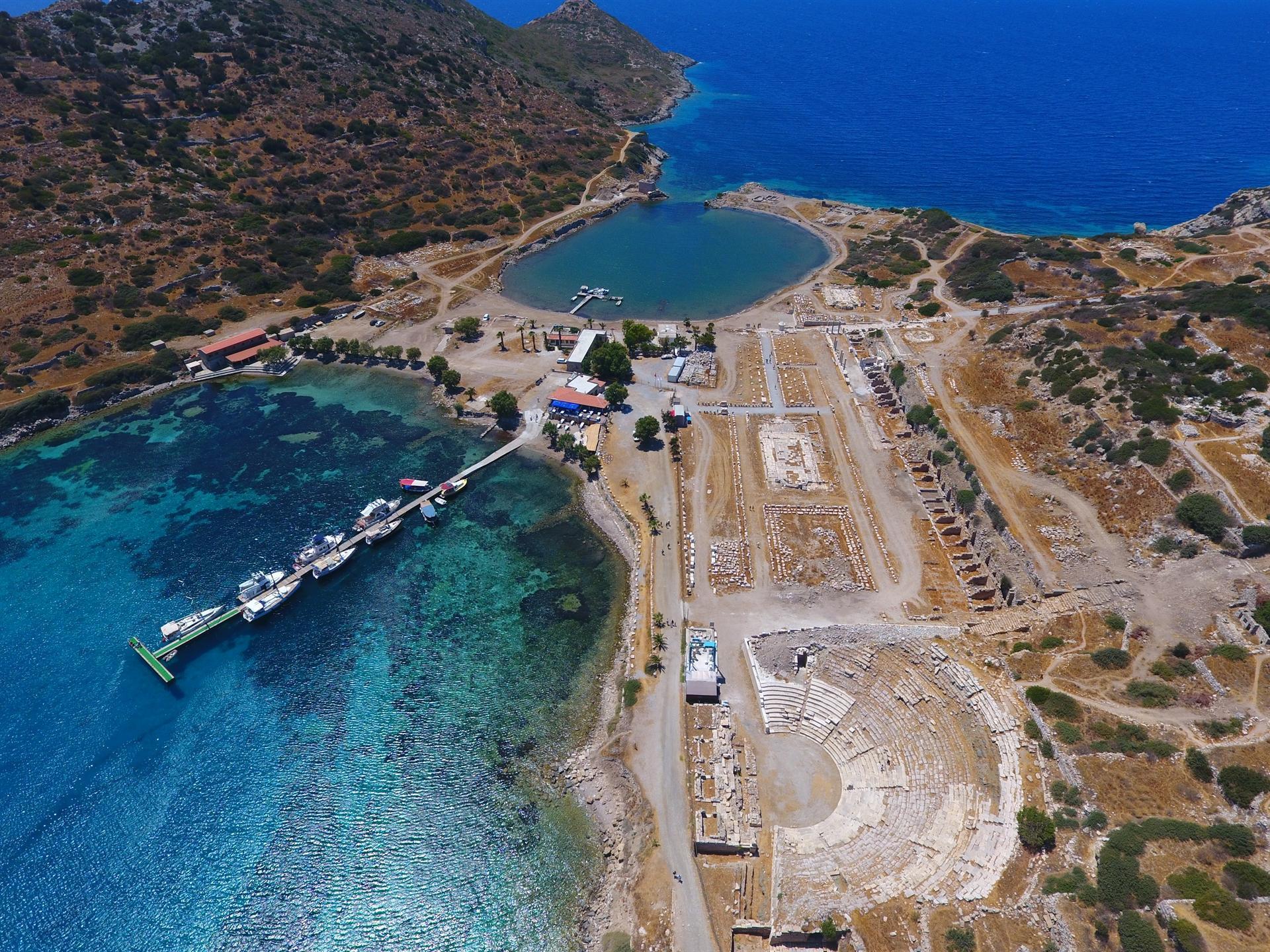
Known for its special location at the junction of the Aegean and Mediterranean seas, the ancient city of Knidos, whose foundation in Datça district of the western province of Muğla dates back 4,000 years, Knidos started welcoming its visitors again as of June 1 following a reopening after COVID-19-related restrictions were loosened.
The ancient city of Knidos, which is believed to have witnessed the life of the astronomer and mathematician Eudoxus, the doctor Euryphon, the painter Polygnotos and the architect of the Alexandria Lighthouse, which is shown as one of the Seven Wonders of the World, Sostratos, draws attention with its centuries-old magnificence.
The head of the Knidos excavations, Selçuk University Archeology Department’s Professor Ertekin Doksanaltı told state-run Anadolu Agency that they continue to work so that visitors to Knidos can experience history, culture and natural beauties together.
Stating that they continued their work in and around the small harbor this year, Doksanlatı said that the restoration of the Çeşme Monument, one of the important structures of Knidos dating back to the 1st century B.C., has been completed.
Noting that the Simaus Heron, which is considered to be one of the important structures of the city, will be restored after the excavations, Doksanaltı said that the monuments and important structures of Knidos will be restored.
65,000 visitors last year
Doksanaltı said that while excavation and restoration works continue in the city, they also started hosting visitors.
“Despite the pandemic, we hosted 65,000 domestic and foreign visitors last year. This year, we started accepting visitors after taking the necessary precautions. A large number of visitors, from both the sea and land, began coming to Knidos.”
Stating that Knidos is located in the southwest of Anatolia at the intersection of the Aegean and the Mediterranean, Doksanaltı said, “Knidos is one of the cities that became richer in a short time by using this location and used this richness for the arts and culture. Both archaeological excavations and historical sources show that Knidos has been inhabited since the 2nd millennium B.C. The finds unearthed during our excavations confirm this. The city became famous especially as a culture and science center in ancient times, and it became a geography where doctors known in the ancient world, which we call the ‘Knidos School of Medicine,’ were trained. It was an important city not only in the field of medicine, but also in the field of astronomy and law.”
Stating that the city started being abandoned due to the weakening of the central administrations, earthquakes and natural reasons in the 7th century A.D., Doksanaltı said that Knidos was considered as a center of tourism, culture and arts in ancient times as well.
